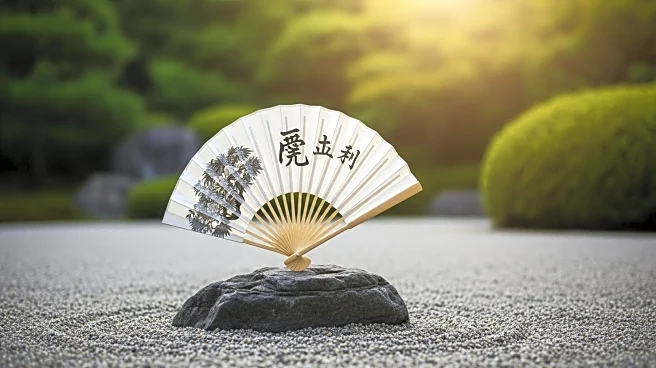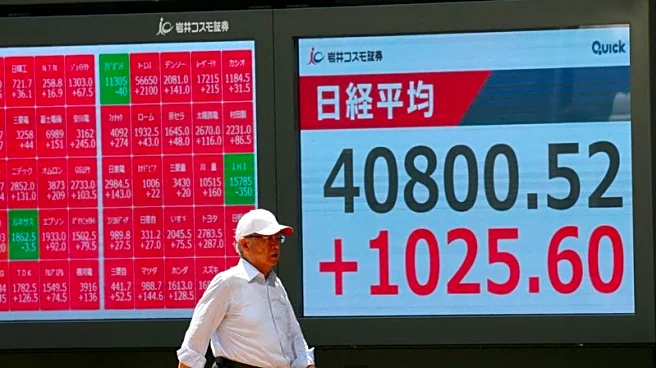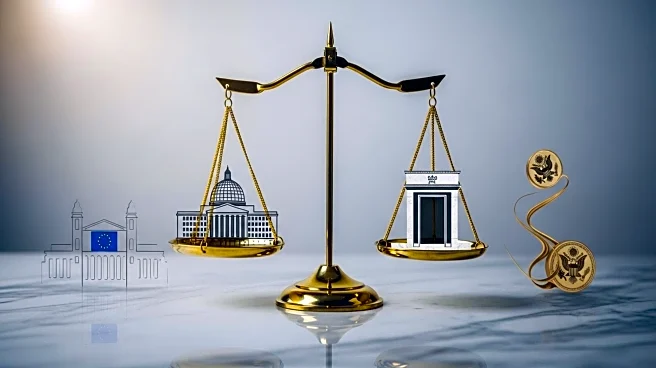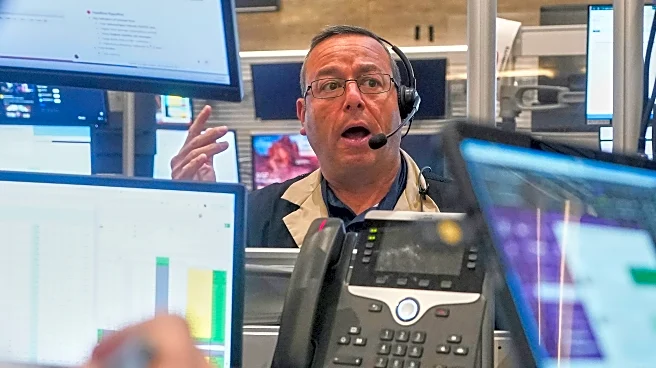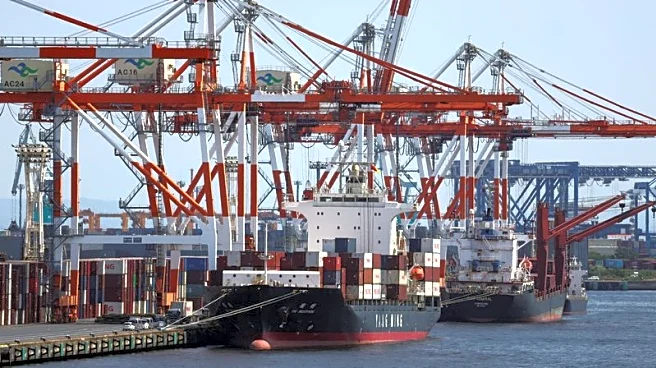What's Happening?
Japan is experiencing a significant shift in capital flows, with Japanese investors increasingly selling foreign stocks and investing in bonds, while foreign investors are injecting record amounts into Japanese equities and bonds. This trend is driven by rising domestic interest rates and a weak yen, which have prompted Japanese investors to seek higher returns abroad. In July 2025, Japanese investors withdrew approximately $3.64 billion from foreign equities, marking the third consecutive month of such outflows. Meanwhile, foreign investors have shown growing confidence in Japan's economic prospects, with a record $56.6 billion inflow into Japanese stocks and bonds in April 2025. This influx is largely attributed to institutional investors like pension funds and asset managers, who are capitalizing on Japan's reflationary momentum.
Why It's Important?
The shift in capital flows has significant implications for global economic trends and Japan's economic trajectory. The increased foreign investment in Japanese assets reflects a broader confidence in Japan's economic policies and corporate governance reforms, which have included substantial share buybacks. This has led to record highs in the Nikkei 225 and Topix indices. The movement of capital from the U.S. to Japan, influenced by trade tensions under President Trump, highlights the geopolitical factors affecting investment decisions. For Japan, the inflow of foreign capital supports its economic stability and positions it as a key player in global reflation trends, while domestic investors remain cautious.
What's Next?
Japan aims to double its inward foreign direct investment to ¥100 trillion by 2030, aligning with strategies to stabilize supply chains amid U.S.-China trade tensions. However, challenges such as volatile foreign direct investment flows and potential tariff risks in U.S.-Japan trade relations persist. Investors will need to navigate these geopolitical uncertainties while leveraging Japan's structural reforms and corporate resilience.
Beyond the Headlines
The interplay between Japanese outflows and foreign inflows is creating a new equilibrium in Japan's market dynamics. This shift not only supports Japan's economic stability but also influences global reflation trends. Investors are adopting nuanced strategies, focusing on high-quality, globally integrated firms and employing innovative hedging strategies to manage currency risks.
